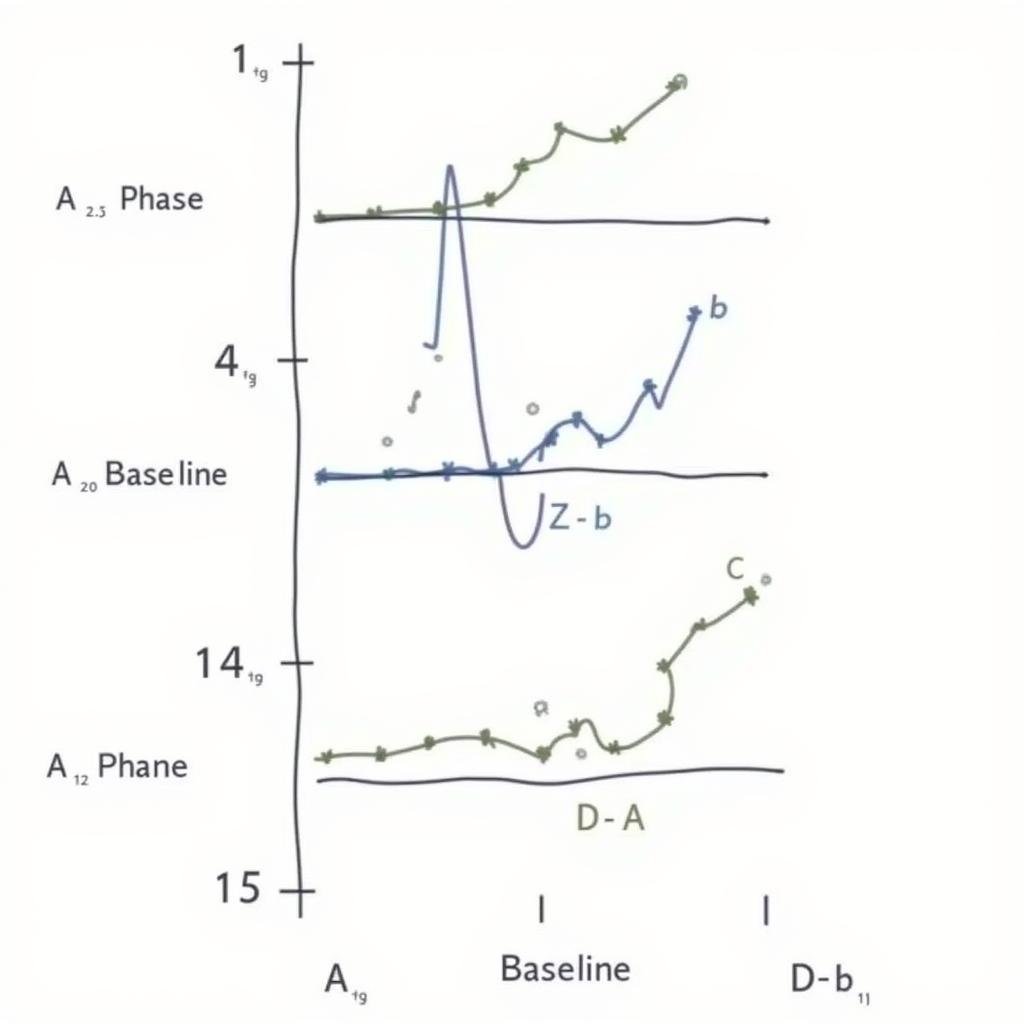A-b-a Research Design, also known as reversal design, is a single-subject research method often employed in fields like psychology and education. But did you know it also holds immense potential for lending rigor to the often subjective world of paranormal research? This approach allows investigators to systematically evaluate the impact of a specific intervention or variable on observed phenomena, paving the way for more credible and evidence-based conclusions.
Delving Deeper into the A-B-A Design
The beauty of the A-B-A design lies in its elegant simplicity. It involves three distinct phases:
-
Phase A (Baseline): This initial phase focuses on establishing a clear picture of the phenomenon in its natural state, without any external influence. Detailed observations are recorded, documenting the frequency, intensity, and duration of the phenomena in question. For instance, if investigating a supposedly haunted location, this phase would involve meticulously documenting occurrences like cold spots, unexplained noises, or apparitions, establishing a baseline of paranormal activity.
-
Phase B (Intervention): This phase introduces the variable of interest—the potential trigger or influence on the paranormal activity. This could involve anything from using specific equipment to implementing a communication technique with purported spirits. Crucially, only one variable is changed at a time, ensuring that any observed effects can be attributed to that specific change. Observations continue throughout this phase, allowing researchers to track any deviations from the baseline established in Phase A.
-
Phase A (Return to Baseline): The final phase involves removing the introduced variable and returning to the original conditions of Phase A. This step is crucial for determining if the observed changes were indeed due to the intervention or simply random occurrences.
 a-b-a research design illustration
a-b-a research design illustration
How A-B-A Design Strengthens Paranormal Research
The systematic nature of the A-B-A design offers several key advantages for paranormal investigations:
-
Enhanced Objectivity: By establishing a baseline and then systematically introducing and removing variables, the design minimizes the risk of confirmation bias, where investigators may unconsciously interpret findings to fit preconceived notions.
-
Causality Assessment: While not definitively proving causation, the A-B-A design allows researchers to evaluate the likelihood that the introduced variable is directly influencing the observed phenomena. If changes in paranormal activity consistently coincide with the presence or absence of the variable, it strengthens the case for a potential causal link.
-
Replicability: The clear structure of the A-B-A design makes it easily replicable by other investigators. This replicability is essential for validating findings and building a cumulative body of evidence within the field.
Examples of A-B-A Design in Paranormal Investigations
Let’s consider a few hypothetical scenarios:
-
Investigating EMF Fluctuations: Suppose researchers are investigating claims of unusual electromagnetic field (EMF) fluctuations in a specific location. They could use an A-B-A design to assess the impact of a specific device claimed to attract or amplify EMF activity.
-
Evaluating EVP Recording Techniques: Researchers could use an A-B-A design to compare the effectiveness of different EVP (Electronic Voice Phenomena) recording techniques. This might involve comparing the use of white noise, specific questioning techniques, or different types of recording equipment.
Addressing the Limitations
While A-B-A design can bring a much-needed level of rigor to paranormal investigations, it’s crucial to acknowledge its limitations:
-
Ethical Considerations: In some cases, manipulating variables within a potentially haunted environment raises ethical concerns, especially if there’s a belief that entities might be present.
-
The Observer Effect: The act of observation itself might influence subtle phenomena, making it challenging to isolate the true impact of the introduced variable.
-
Complex Interactions: Paranormal phenomena are likely influenced by a multitude of factors, many of which may be beyond our current understanding or ability to control.
Conclusion
Despite its limitations, the A-B-A design offers a valuable framework for conducting more systematic and credible paranormal investigations. By embracing this approach, researchers can minimize subjectivity, enhance the reliability of their findings, and contribute to a more evidence-based understanding of the unknown.
FAQs About A-B-A Research Design
1. Can A-B-A design prove the existence of ghosts?
While A-B-A design cannot definitively prove the existence of ghosts, it can provide stronger evidence for or against specific claims related to paranormal activity.
2. Is A-B-A design only useful for investigating hauntings?
No, A-B-A design can be applied to investigate a wide range of paranormal phenomena, including ESP, psychokinesis, and cryptozoology.
3. What are some alternatives to A-B-A design in Paranormal Research?
Other research methods that can be used include controlled experiments, observational studies, and case studies, each with its own strengths and limitations.
 Researchers analyzing data in a paranormal research lab
Researchers analyzing data in a paranormal research lab
We encourage you to explore the other articles on our website to learn more about different research methodologies and their applications in paranormal investigations. If you have any questions or need assistance with your own research, our team is here to help.
Contact Us:
Phone: 0904826292
Email: research@gmail.com
Address: No. 31, Alley 142/7, P. Phú Viên, Bồ Đề, Long Biên, Hà Nội, Việt Nam
We offer 24/7 customer support.